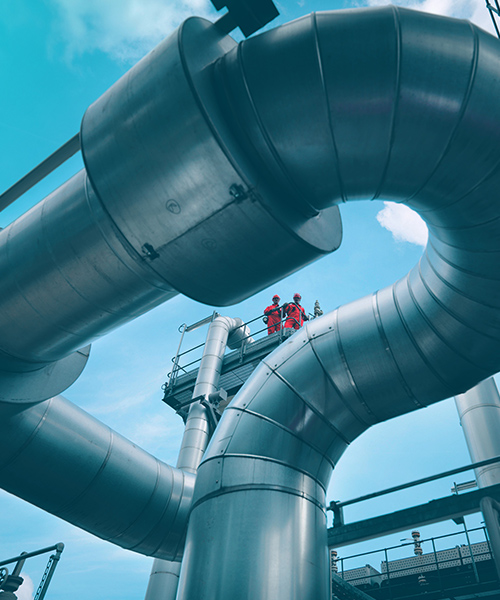May 06, 2025 • 4 min read
Making CCUS viable for cement: The role of integration and partnership
CCUS collaborations across the value chain as a key lever to help achieve industrial net zero goals
Concrete is the most used man-made material on the planet and plays a critical role in infrastructure and energy development. However, the cement industry faces a major challenge: meeting growing infrastructure demand while working toward net zero emissions and decarbonizing its carbon-intensive manufacturing process.
Progress toward meeting the demand and decarbonization goals requires more than incremental change. Legacy industries need to embrace innovation and adopt new financial and contractual models, collaborating beyond traditional silos, integrating infrastructure and leveraging diverse technologies to achieve optimal solutions.
Barriers to scalable CCUS in Cement
“To help meet mid-century net zero goals, development and adoption of CCUS must accelerate at a pace and scale like never before,” says Dr. Maryam MKhani, Director - CCUS Technology Integration at Worley.
This urgency must now translate into proper budgeting and collaborative execution. Final investment decisions (FID) for deploying carbon capture at cement plants hinge on full value chain alignment — from capture through transport to storage.
Most cement plants aren’t near depleted oil and gas wells or other suitable CO2 storage sites. While on-site CO2 utilization offers a potential pathway, the volume captured often exceeds typical feedstock needs. “In regions like the Nordics, mature and dedicated storage sites have been identified as the final destination for the captured CO2,” notes MKhani.
“In other regions however, decarbonization will depend on forming industrial clusters and centralized CO2 hubs, similar to strategies used in the hydrogen sector.”
Making CCUS a seamless part of cement operations
To deliver scalable CCUS in cement, industry leaders are turning to integration and collaboration models. In Norway, Heidelberg’s pioneering Brevik CCS project achieved mechanical completion in December 2024 and is set to capture 400,000 tonnes of CO2 annually for offshore sequestration via the Northern Lights project. This marks the first large-scale CCUS facility for cement globally.
“Brevik CCS is landmark, and its success carries weight across the sector,” says Gary LeMaire, CCUS Senior Director. “At Worley, we’re also supporting Heidelberg’s Padeswood facility in North Wales — the UK’s first commercial-scale carbon capture project for cement manufacturing.”
Still, technical progress is only part of the puzzle. Post-combustion capture technologies deployed for cement manufacturing are in early development and most projects face coordination issues across stakeholders, especially around transport and storage.
“Many capture projects lack firm transport and storage agreements,” says LeMaire. “Transport and storage developers often evaluate multiple emitters and must prioritize based on feasibility, connection costs and constraints in pipeline, shipping or storage capacity.”
The critical role of integration in scaling CCUS – connecting a fragmented value chain
To overcome these bottlenecks, the industry increasingly sees the value of a trusted integrator - one that can align carbon capture projects with transport and storage developers in real-time.
“We’re applying our energy transition expertise and project experience to design optimal CCUS networks. This service can help with matching feasible carbon capture projects by the emitters with storage solutions and links them to carbon accounting, verification and trading systems,” explains MKhani.
This approach supports scalable industrial hubs, where emissions from multiple sectors can be captured, transported and stored efficiently. “Shared infrastructure lowers cost and accelerates deployment, collectively reducing carbon footprints,” LeMaire says. “It also strengthens the longer-term business case, especially as carbon pricing evolves.”
CCUS as a cornerstone of sustainable cement
Addressing the cement sector’s emissions requires more than just cleaner operations or alternative materials. CCUS implementation is now essential — not just as a compliance measure, but as a strategic enabler of a lower-carbon, resilient built environment.
“The cement industry will be foundational to building the infrastructure of a net zero future,” says LeMaire. “Decarbonizing cement must stay at the forefront, with CCUS at the core.”
With demand for concrete continuing to grow, the industry must act decisively. Through the right partnerships, integrated strategies and infrastructure investment, CCUS can secure cement’s role in a sustainable future.








